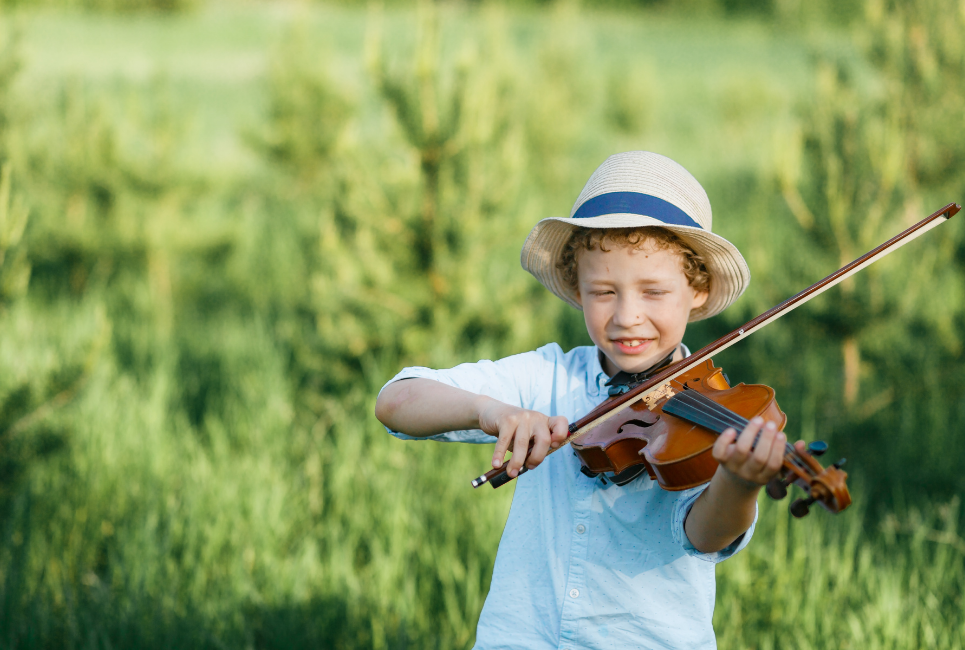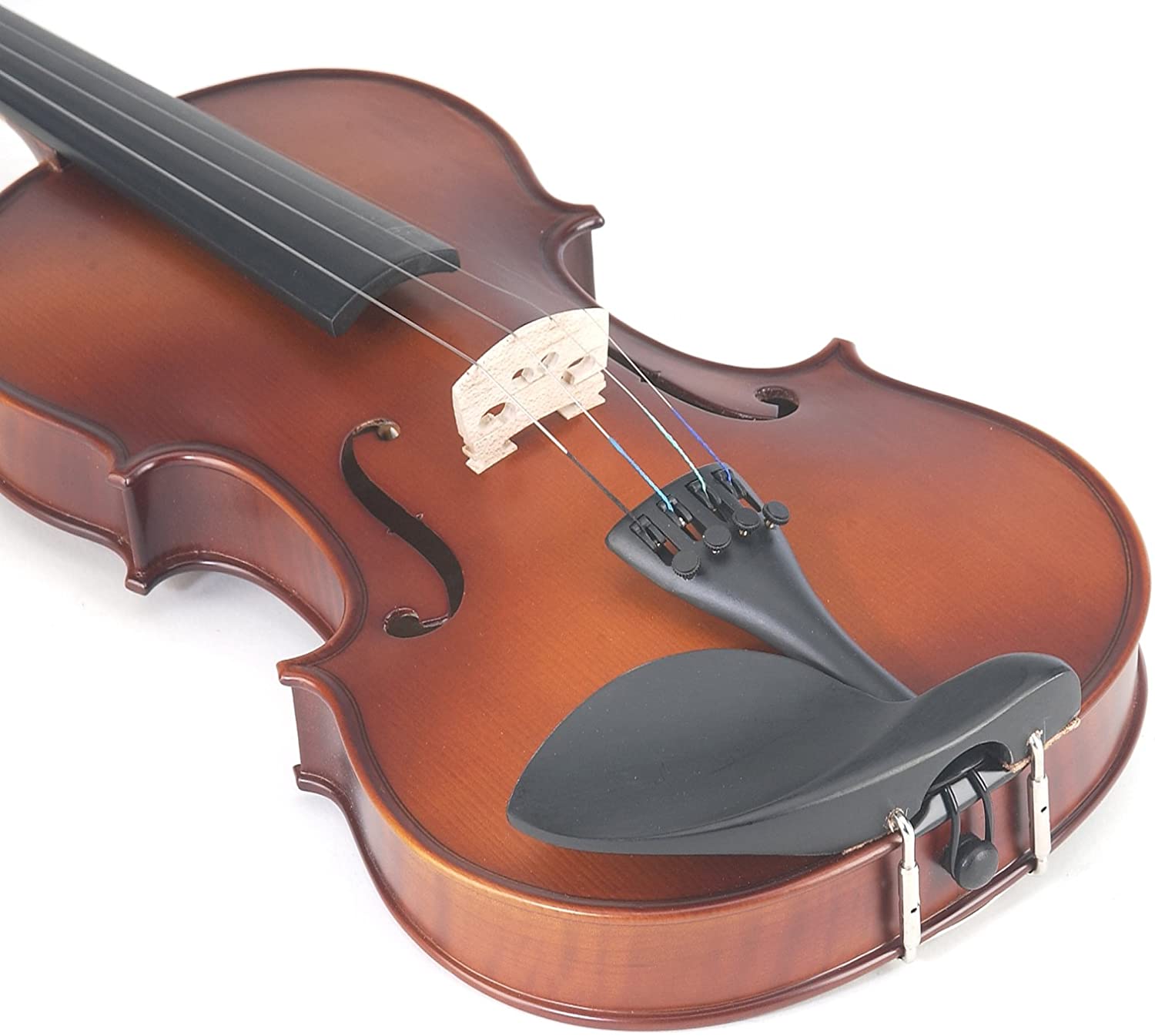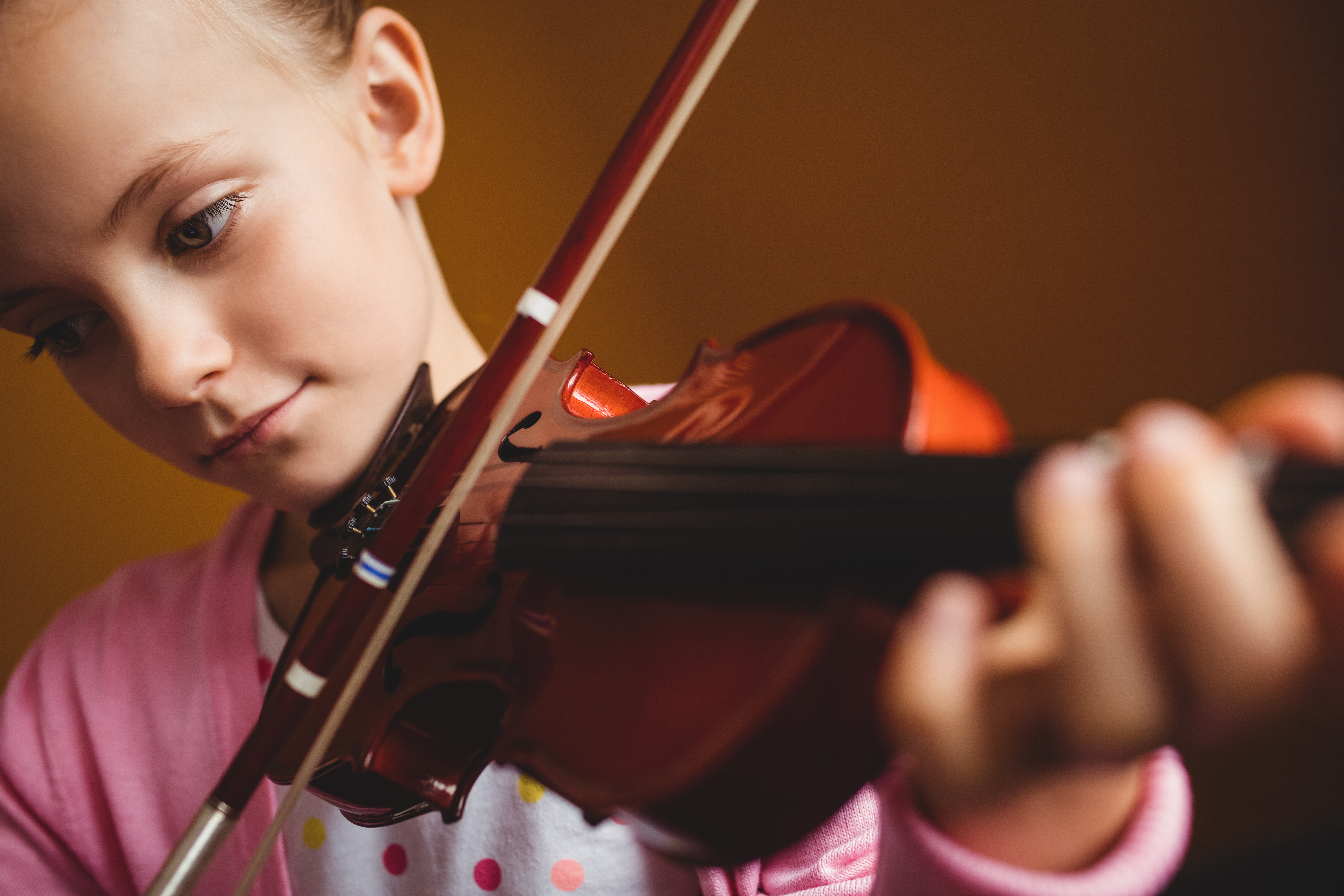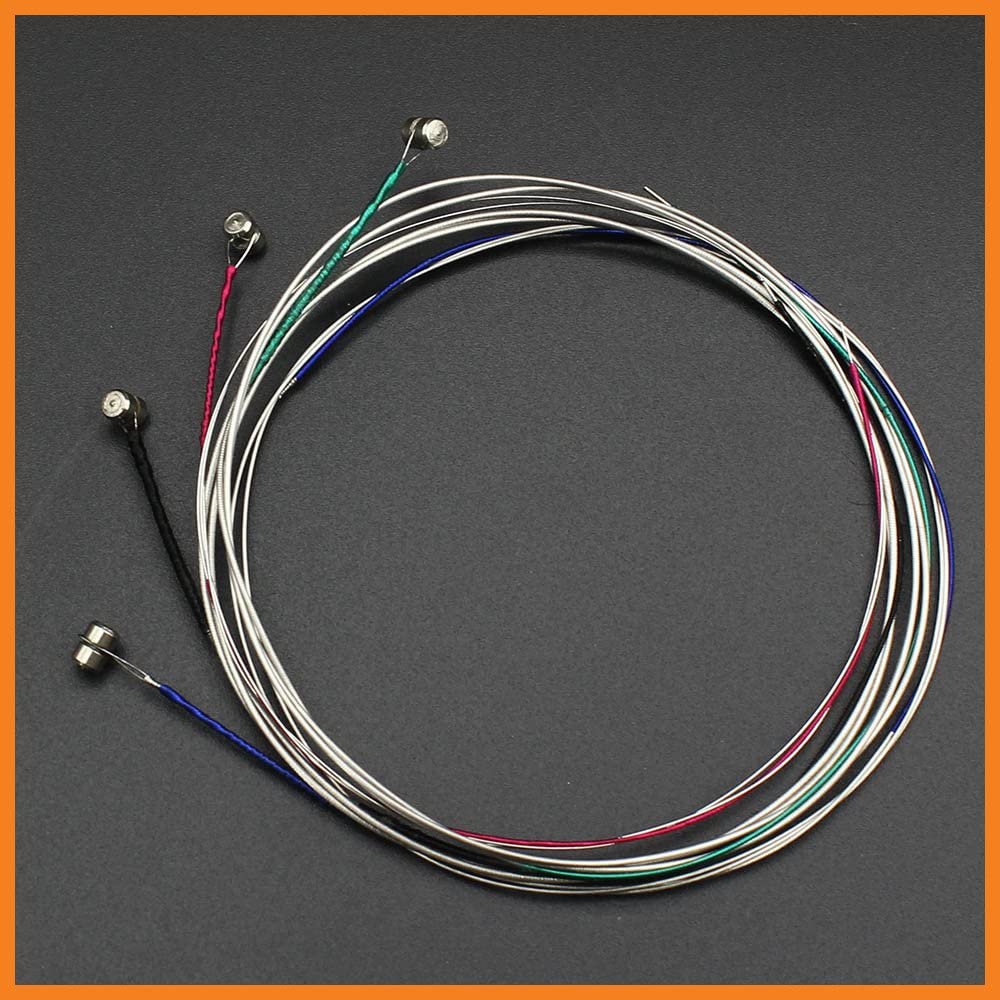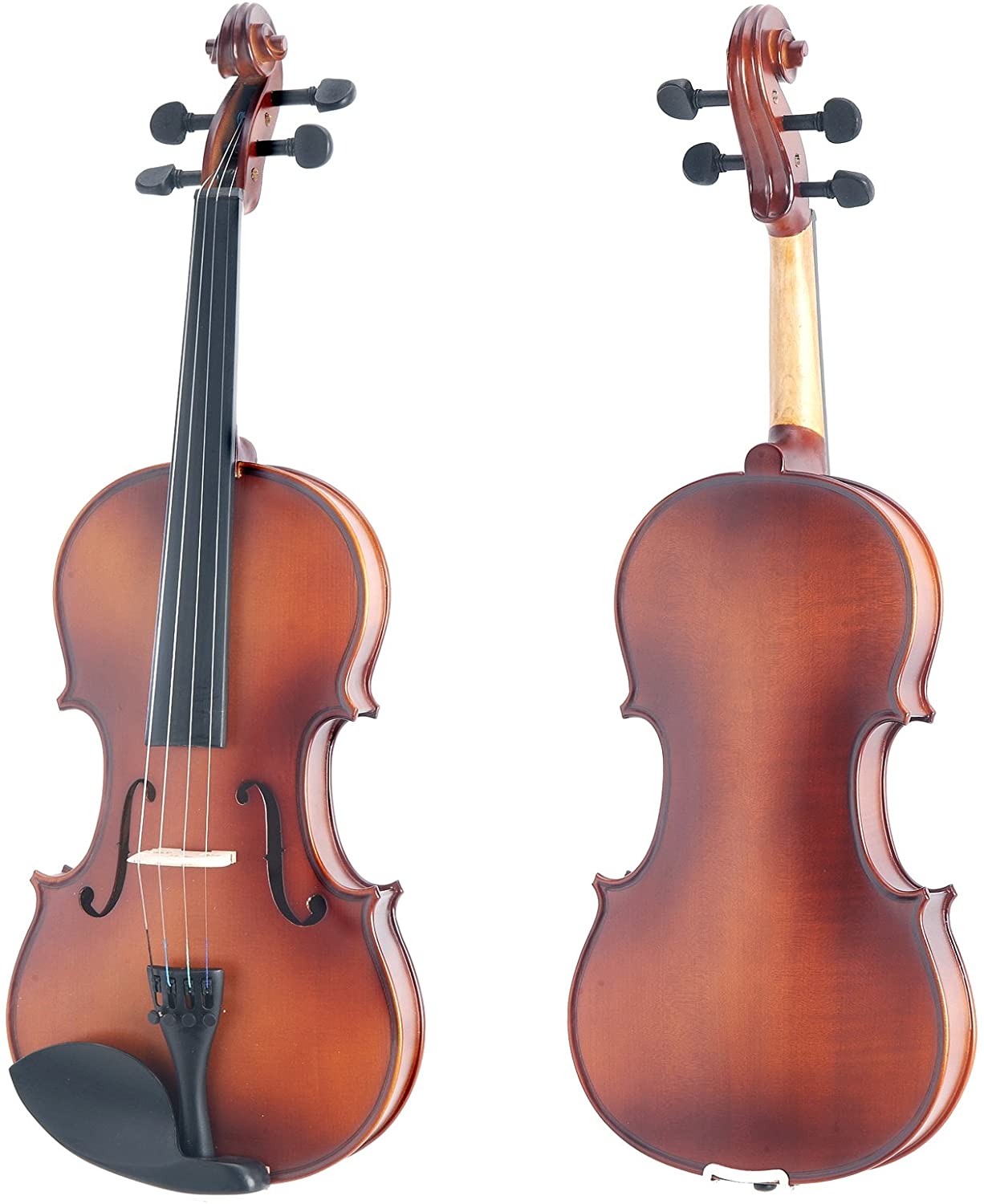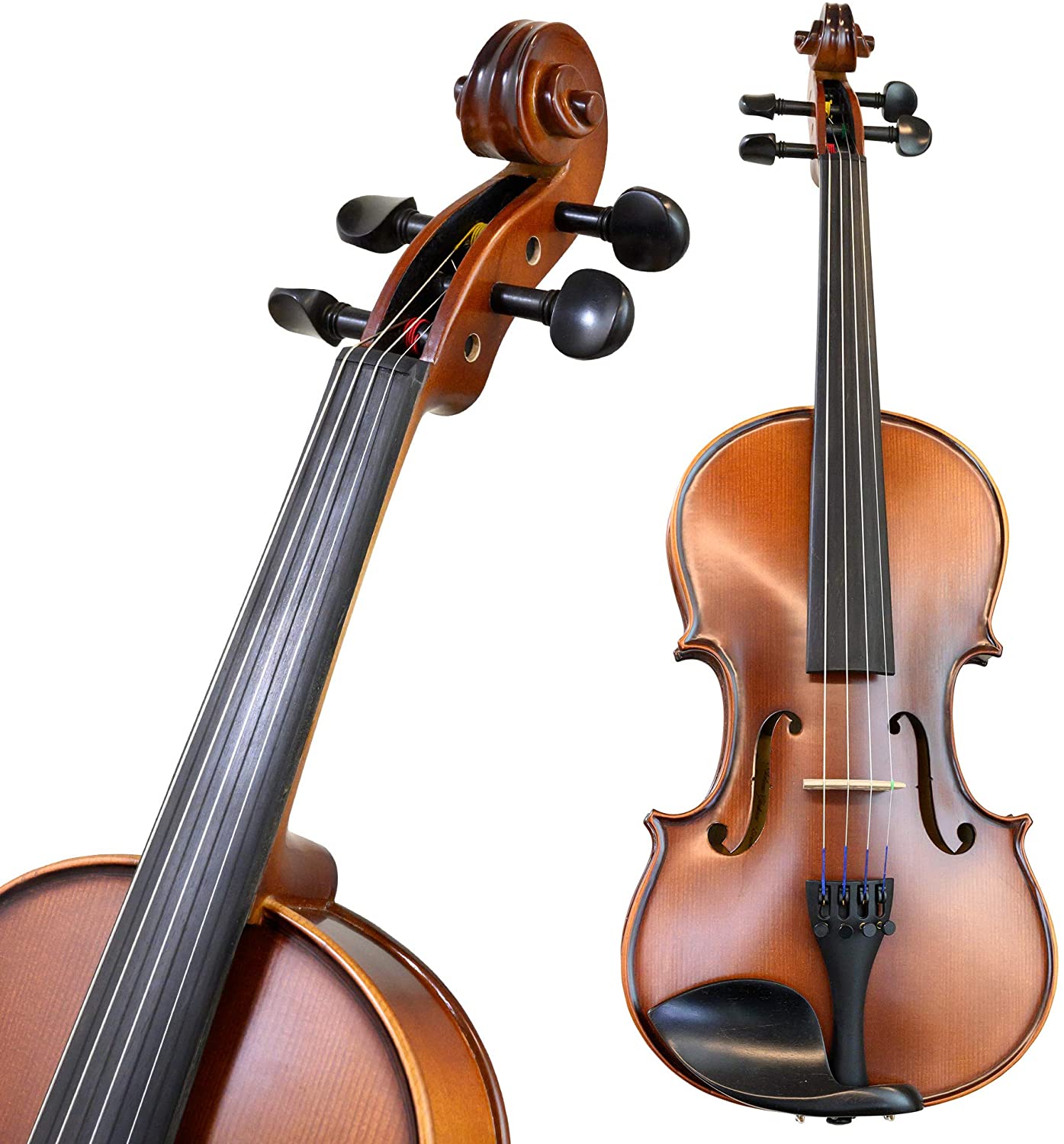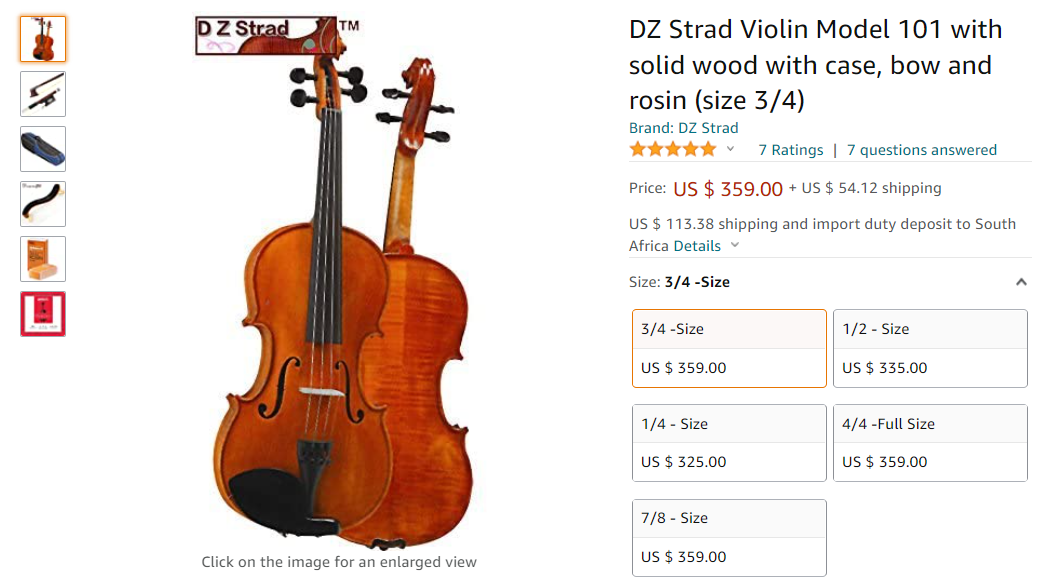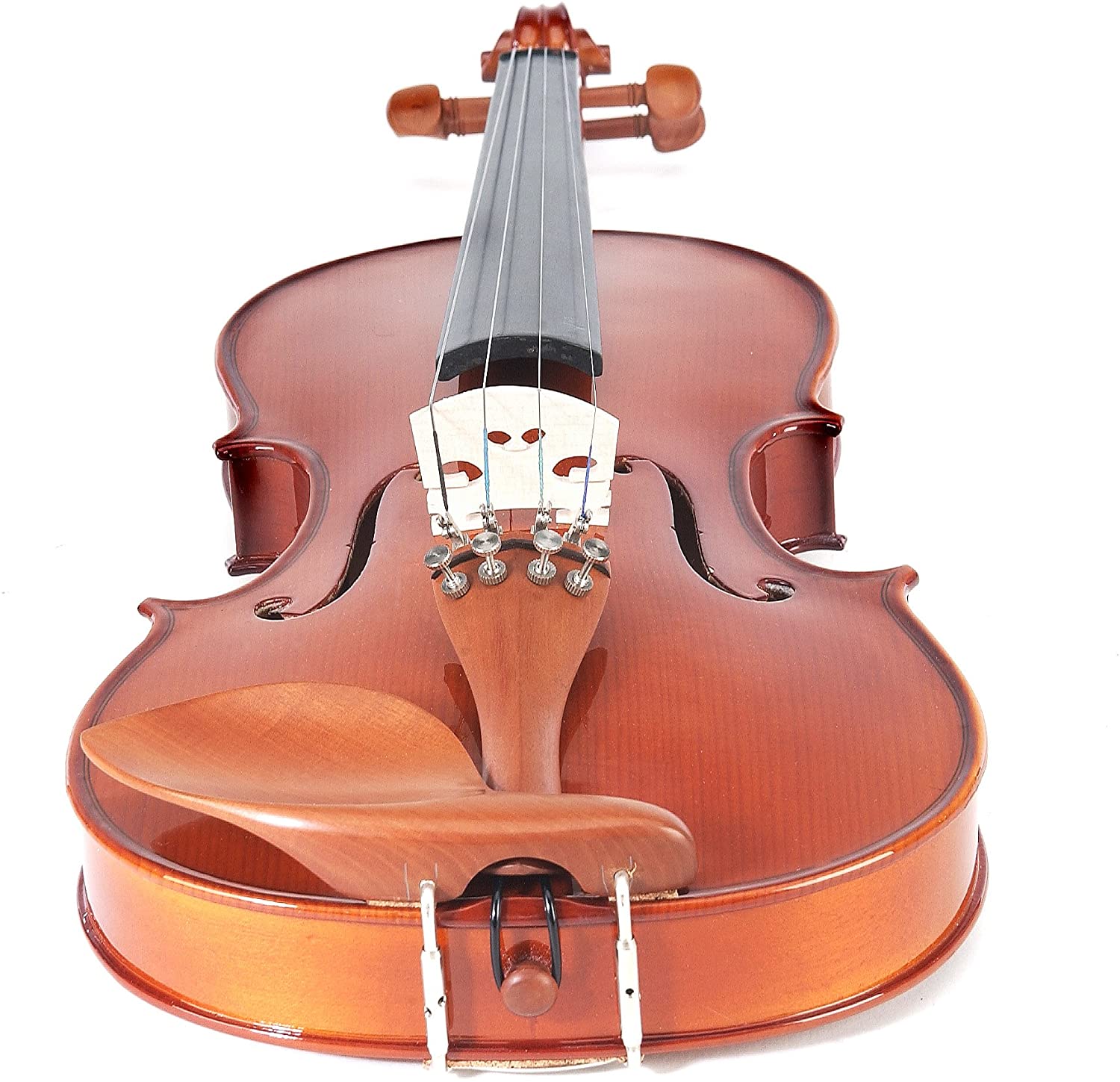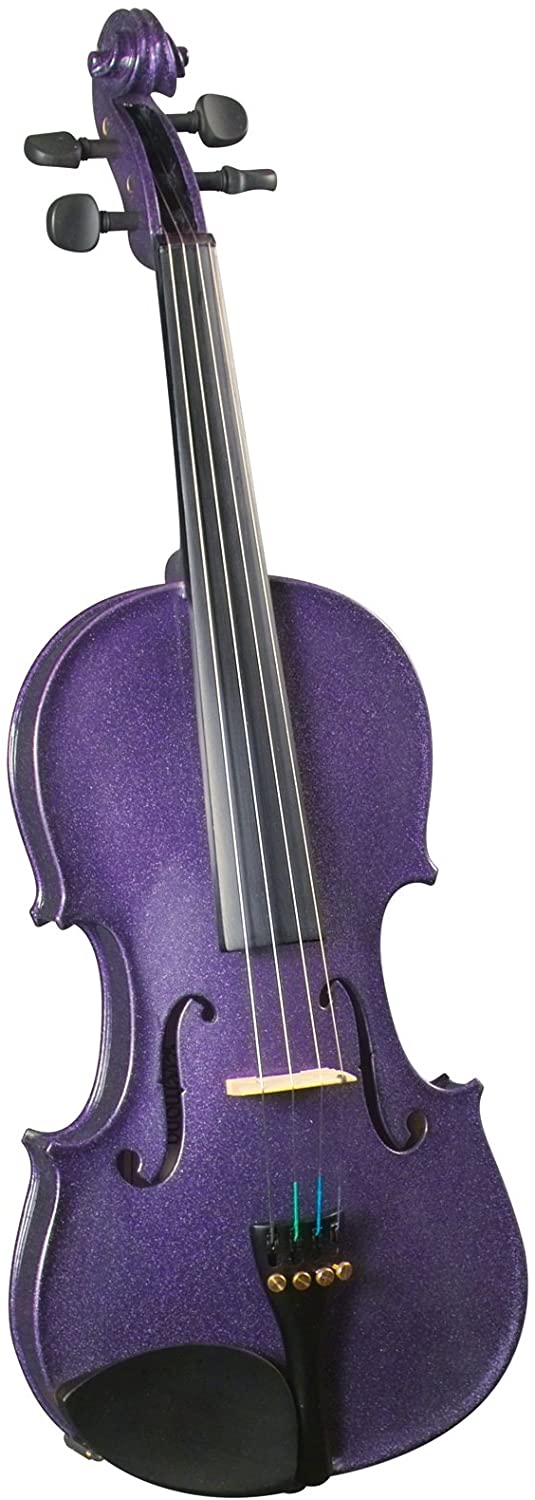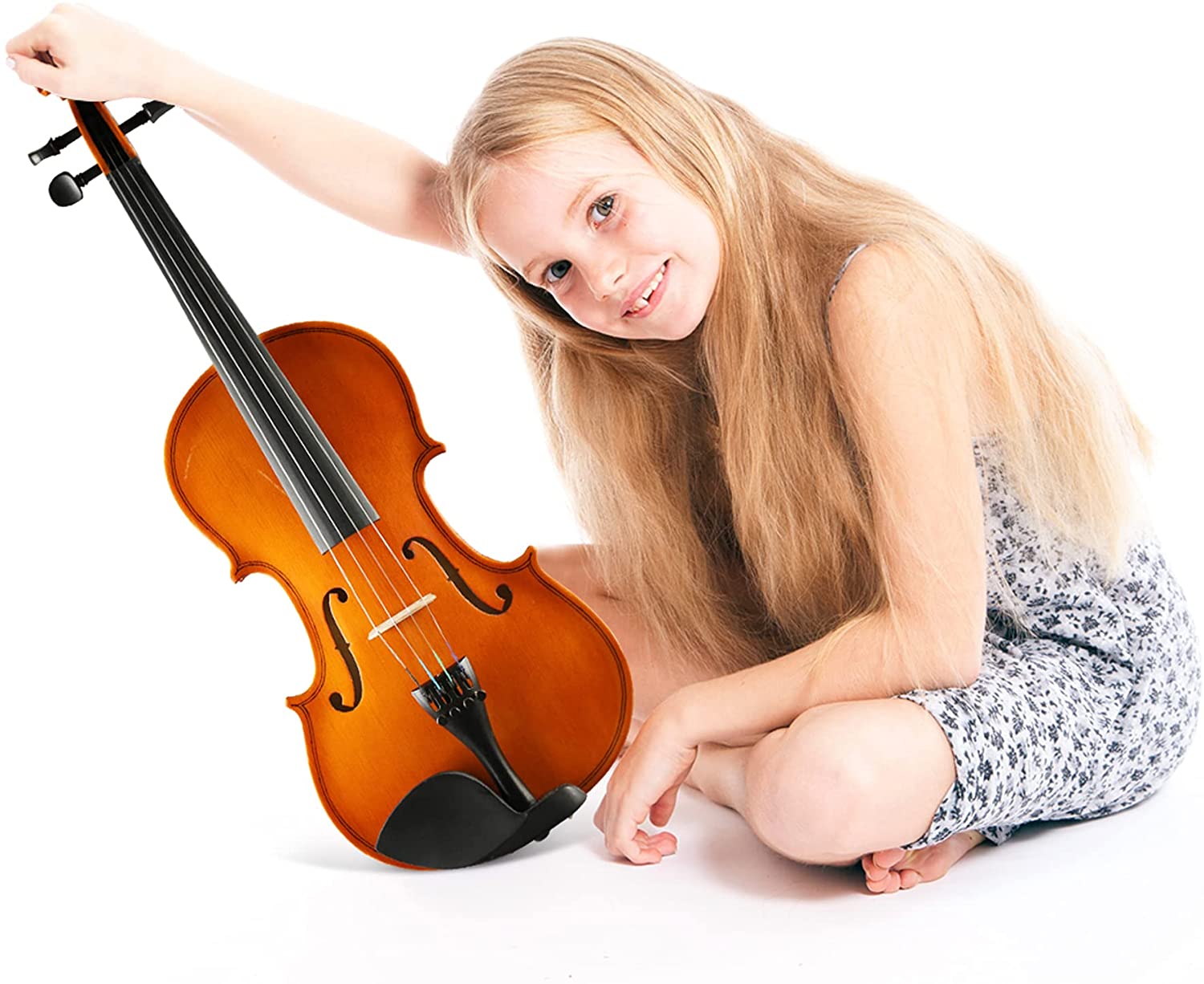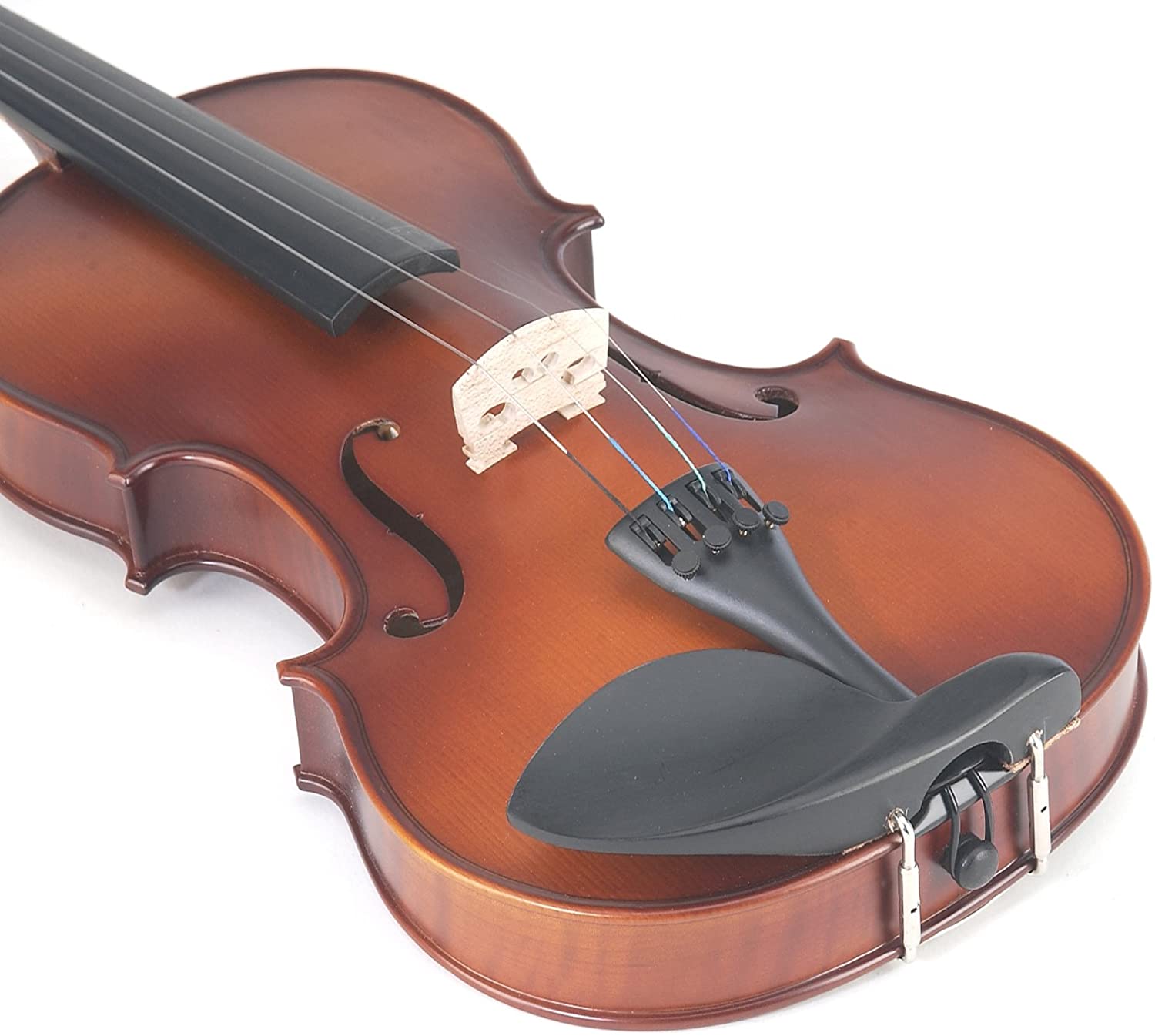- How to Find the Best 5 String Violins - April 21, 2022
- How to Hold a Violin Bow - April 21, 2022
- How to Hold a Cello Bow - April 17, 2022
Summary: Knowing how to find the best 3/4 violin means making sure it is the right size for your needs and that the construction and design is dependable and from a well-known manufacturer.
When I first told my mother that I wanted to start playing the violin, we did not have Amazon yet, so finding the best 3/4 violin (which is what the music teacher told us we needed) meant going to the local music shop right next door, run by a friend of ours. She had a rough idea of our budget and my musical abilities, so she gave us her recommendation.
Now that my child says they want to play the violin, I do not have our family friend or a local music shop, but I have Amazon. Turns out Amazon has quite a few selections, and it can be overwhelming to figure out which one is the right choice.
Top Pick: Mendini By Cecilio Violin 3/4
Here are some of my basic dos and don’ts:
- Do: Pay for a violin outfit if you buy a 3/4 size for a child. An outfit will have everything your child needs to get started with the violin. You do not have to buy it individually.
- Do not: Pay top dollar for the absolute best violin just because it is the most expensive. There are plenty of internationally recognized manufacturers who offer great violin outfits and 3/4 size violin for adults and children at affordable prices.
- Do: Order based on arm measurement, not age alone.
- Do not: Order accessories without checking that they fit a 3/4 size instrument.
What Does a 3/4 Size Mean?
Violins, like many stringed instruments, are listed based on their size. The sizes correlate specifically to arm length but commonly to age ranges as well. You will see violin sizes listed as follows:
- 4/4
- 3/4
- 1/2
- 1/8
- 1/10
- 1/16
Not all manufacturers offer all these sizes. There are plenty of manufacturers who only offer the top three sizes or even the top two sizes, 3/4 and 4/4.
To figure out if a 3/4 size is suitable for you or a member of your family, hold out your arm and take a measurement from the end of your fingertips to the opposite end of your arm.
| 4/4 or “full size.” | Anyone 11+
Arm lengths of 23.5 inches or longer |
| 3/4 | Children 10-11
Arm lengths between 22 inches and 23.5 inches |
| 1/2 or “half-size.” | Children 8-9
Arm lengths between 20 inches and 22 inches |
| 1/4 | Children 6-7
Arm lengths between 17.6 inches and 20 inches |
| 1/8 | Children 5 years old
Arm lengths between 17.1 and 17.5 inches |
| 1/10 | Children 4 years old
Arm lengths between 15 ⅜ inches and 17 inches |
| 1/16 or “toy violins” | Children 2-3 years old
Arm lengths between 14 inches and 15 ⅜ inches |
When picking the wood, be advised that it gets better with age. The longer a piece of tonewood is left to age before it is constructed into the violin, the better the sound will be. Professional instruments for adults using a 3/4 size violin will have tonewood aged 50 years or more. You might even be able to find an antique violin with a much richer, older piece of tonewood. By comparison, if you are purchasing a 3/4 size violin for a younger member of your family, a beginner violin will typically have tonewood that has been aged only one or two years which is perfectly suitable for someone just starting out.
Types of 3/4 Violins to Consider and Which to Avoid
You do not have to avoid violins made in China, but you should avoid anything that is not an actual violin. Many items are marketed today out of places like China that are called “VSO” or “violin-shaped objects.” Never buy a VSO; buy an actual violin.
Size matters so, if you are measuring the arm length for your child, you do not have to pick a 3/4 size violin just because your child is 10 years old. If you have an eight-year-old with the appropriate arm length, feel free to get the 3/4 size violin. Likewise, if you have a 10-year-old who has a much longer arms fan, you might need to upgrade to the full size.
Like Goldilocks, choose a violin that is right for the arm length; otherwise, it could be too long or too short.
Refer more specifically to the arm length, not just the age. Every child and adult has slightly different bodies, so measurements will prove more important. You might just be like myself, a shorter, smaller adult with an arm length akin to that of a common 10-year-old. Suppose your arm length is between 22 inches and 23.5 inches, and you are an adult. In that case, it is unlikely you will continue to grow, so pick the three-quarter size over the full size to ensure it is comfortable in your grip.
The size of a violin is important because it dictates how comfortable that instrument is while holding it. If the size is not just right, you won’t be able to bend your elbow the right way. This will put strain on other parts of your body. It will make it difficult to enjoy playing the instrument and become proficient at it.
What Accessories do I Need?
You will need corresponding bows and strings when you get a new violin. The bow is usually made of synthetic material or horsehair. It should be 27 inches for a 3/4 size violin.
You might also need new strings. If you rent a violin, chances are the strings on the violin are old. So, you need to get new strings. Make sure these, too, fit the size of the violin. Strings come in many materials.
- Gut strings are made of sheep gut and are the oldest type. These are meant for professionals.
- Steel core strings have a steel core and are wound with other materials. These are better for professionals and intermediate players.
- Dominant strings have a synthetic core made of nylon and are suitable for all levels.
With the bow and strings ready, you might consider a case, too, in which your violin can rest and travel. Many cases have a pocket or pouch for spare strings (in case one breaks while you are playing) and your bow.
Should I Get a 3/4 Violin Outfit?
If you are getting a 3/4 size violin for a beginner child rather than an adult, you can also consider a violin outfit. Many top-of-the-line manufacturers offer 3/4 size violin outfits for children or adult beginners that come with everything you need, including:
- The case
- The bow
- The strings
- A chin rest
- A shoulder rest
- Some rosin
Investing in an outfit from a reputable manufacturer means you get everything you need without having to deal with that awkward moment when a music teacher congratulates you on your new violin but then asks you how exactly you plan to play without a bow. And yes, this absolutely happened to me on my first day of violin lessons.
So, once you find the best 3/4 violin, don’t forget to invest in a good bow and once you start traveling to and from performances or rehearsals, consider getting a good case as well.
The more accessories you can get in an outfit, the better your investment will be. A kid will naturally match things like the violin and the bow, which means you do not have to figure out whether the sizes match yourself.
Remember, you do not have to start with the biggest and the best if you are buying for a child. Everyone must start somewhere. As a beginner, you can invest in something with all the accessories and helps you focus on your lessons and refine your technique. As children grow and transition into a full-size violin that they will potentially use for the rest of their career, you can invest in an internationally recognized brand name.
Best 3/4 Violins
It is important to know which brand names to trust. I have a Mendini by Cecilio ¾ violin, which I love. The brand is highly recommended and offers a range of sizes and outfits for beginners–kids and adults.
Mendini By Cecilio Violin 3/4
MV300 Satin Antique Violin outfit comes with all the necessary accessories. The design is hand-carved spruce for the top and maple for the back and sides, a common mixture for student violins. The fingerboard is maple, a common wood for students, and has an alloy tailpiece and chin rest. The bow is made of Brazilwood with unbleached horsehair. What I like most about Cecilio and this outfit is that you get a violin book with basic lessons and techniques with downloadable exercises. Realistically, you do not even need rudimentary lessons to get started learning how to use this violin.
Pros
- Made by a world-renowned manufacturer.
- Comes with all the accessories you need.
- Has a basic lesson kit.
Cons
- The wood is not aged and therefore not suitable for intermediate or advanced players.
Antonio Giuliana Etude 3/4 Violin
It is a good pick for intermediate players. It boasts maple wood and ebony fittings. It has a case in which you can store the Brazilwood and horsehair bow, the rosin, and the extra Prelude strings.
Pros
- Comes with an outfit, so you have everything you need
- Brazilwood bow
- Prelude strings
Cons
- The violin is simple in its design without any creative carvings or woodwork
The DZ Strad 3/4 Violin
It is made with maple and spruce. The tonewood is ebony. It comes with Prelude strings which are a reliable brand. The woodwork is beautiful, but the sound is even more so.
Pros
- Hand-carved
- Has traditional fittings
- Comes with accented edges
Cons
- This does not come with an outfit form, so you need to buy a bow, case, and rosin yourself.
Cecilio CVN-200
Is a solid wood 3/4 violin with spruce wood on the top and maple on the back. It comes with a Brazilwood bow made with horsehair. As one of the best names in the industry, this 3/4 violin outfit has a chromatic tuner. You can tune your new violin as soon as you get it, lessons that you can start with immediately, and 2 bows in case one breaks.
Pros
- It comes with D’Addario strings which are top-of-the-line synthetic strings.
- There is an outfit with a case, spare strings, rosin, and bow included.
Cons
- It is a bit on the pricy side for a child.
Cremona SV-75
It is another top name for violins, with a top made of spruce wood and a back made of maple. Made in the United States, it is hand-carved with a sparkling gloss finish.
Pros
- Comes in a sparkly purple color rather than natural wood
- Has Prelude strings, perfect for music students.
Cons
- Painted fingerboard
DEBEIJIN 3/4 Violin
This Handcrafted Beginner Violin is another reputable name that has all the pieces you need to get started. This violin is designed for adults or children and comes already set up and ready to (tune and then) play. The violin and bow are made of basswood. The bow has horsetail hair.
Pros
- Comes with all the accessories you need.
- The violin is handcrafted.
Cons
- Does not have a hard case.
Other reputable name brands include:
- Suppose you still want to know how to find the best 3/4 violin. In that case, I will obviously say consider Mendini or Cecilio first-Mendini for beginners and Cecilio violins for intermediate or professionals. Cecilio is known for producing the best-handcrafted violins and the best violin bows worldwide.
- Fiddlerman has produced some of the best violins on the market for decades. This is an especially good choice for intermediate or professional players.
- Franz Hoffmann violins are made in China; however, they are a trusted dealer for dependable violins for beginners.
- Scott Cao is a contemporary violin maker. He is new compared to more established brands like Cecilio but produces quality products.
- Another newcomer is Cremona. This company was founded in 1989 and has since received multiple awards for its high-quality violins better for intermediate players rather than beginners.
- Advanced and professional musicians can find great quality with Carlo Lamberti.
- Yamaha is very well known for a range of instruments, including violins. This is suitable for beginners, but of course, more advanced and professional players should invest in a violin that comes from a manufacturer that focuses exclusively on stringed instruments.
Out of all of these great choices, though, my top pick is Mendini By Cecilio Violin 3/4. I have always liked Cecilio products and found that their designs provide a clear, reliable tone no matter the make and model. I am also fond of any manufacturer who includes a comprehensive outfit with their instruments. It makes things much easier for beginners, parents and even professionals who want to upgrade to something new but want to ensure all the pieces fit properly and the strings match.
FAQ
Answer: If you are or have a student playing the violin, it makes sense to rent a 3/4 size violin when and where you are able. The reason being, as one grows, so does their violin size. Renting a 3/4 size is a great way to play the violin until such time as someone gets big enough for a full-sized.
Answer: If you are purchasing a 3/4 size violin for a 10-year-old who is just starting with the instrument, or a 10-year-old who has had a few lessons in the past but is now transitioning to a bigger instrument, they will have very unique needs at this particular stage in their physical and musical development. Younger musicians will focus more heavily on ensuring they have the right position while they hold their violin. They will spend a lot of time adjusting their face with the shoulder rest so that they are able to see their strength. They will also focus on making sure their elbow is positioned and moving the right way in accordance with their bow. This is a stage where refining their technique is one of the more important stages of learning, and that is directly influenced by the violin they have. Violins must be the appropriate size; otherwise, playing becomes uncomfortable, and the ability to refine all these techniques is challenging at best.
Answer: I have already covered a lot about finding a good violin. So, if you are buying a violin, it comes down to having the right size first and foremost. Once you know that the 3/4 size violin is best for you and your situation, then you look at the artistry and the materials. Again, the materials for a beginner 10-year-old will be slightly different from an intermediate adult who just needs a new violin but has been playing successfully for years. There are many affordable brands for beginners, but names like Mendini and Cecilio have been a staple in the world of handcrafted violins for a very long time, and for a very good reason.
Answer: As mentioned, the most important factor for determining what size violin you should get is your arm length. Most people refer to the general guidelines for ages listed in the table above. T be 100% certain that you have the right size; you want to measure your arm length to ensure the violin fits appropriately in the space between your hand and your shoulder.
Looking for more interesting readings? Check out:

